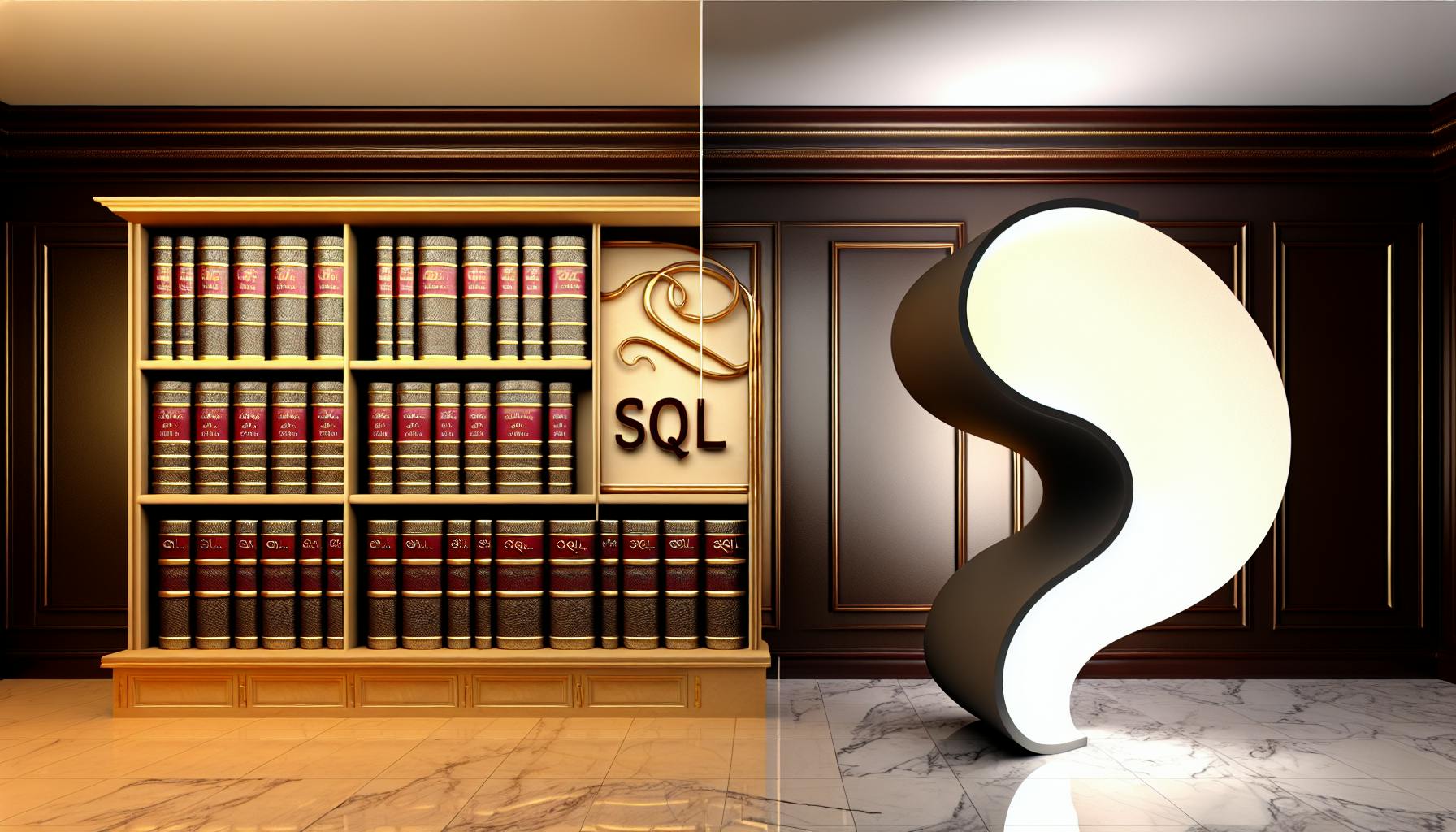Text mining in R allows you to uncover valuable insights from textual data. Here's a quick guide to get you started:
-
Set up R and RStudio: Download and install R from CRAN and RStudio for a user-friendly interface.
-
Install Packages: Use
tm,tidytext,stringr, andtidyrfor text mining operations. -
Text Preprocessing: Learn to clean and prepare your text data for analysis, including tokenization, stopword removal, and stemming.
-
Explore Key Packages: Discover
stringrfor data cleaning,Quantedafor data pre-processing,Text2vecandldafor topic modeling, andSentimentAnalysisfor understanding sentiments. -
Practical Techniques: Dive into creating document-term matrices, understanding TF-IDF, implementing topic modeling, and sentiment analysis.
-
Advanced Strategies: Explore n-grams, text classification, and leverage machine learning for deeper text mining insights.
-
Applications: See how text mining is applied in customer feedback analysis, social media monitoring, financial forecasting, healthcare research, and chatbot conversations.
This guide provides a solid foundation for using R in text mining, from setting up your environment to applying advanced techniques for real-world applications.
Getting Started with R and Text Mining
Setting Up Your Environment
First things first, you'll need to set up R and RStudio on your computer:
-
Head over to the Comprehensive R Archive Network (CRAN) at cran.r-project.org to download and install R. Pick the installer that matches your computer's operating system.
-
Grab RStudio Desktop Open Source Edition from rstudio.com/products/rstudio/download/. RStudio makes working with R a lot easier.
After installing R and RStudio, it's time to add some essential packages for text mining:
-
tm - this is the backbone for text mining in R
-
tidytext - helps tidy up text for analysis
-
stringr - great for working with and analyzing text strings
-
tidyr - turns messy data into something you can work with
You can install these packages by typing the following into the RStudio console:
install.packages("tm")
install.packages("tidytext")
install.packages("stringr")
install.packages("tidyr")
Understanding the Basics of Text Mining
Before diving into text analysis, you need to prep your text data. Here's a quick rundown of the basics:
-
Tokenization - chopping up text into individual words or pieces
-
Cleaning - making text uniform by getting rid of stuff like punctuation and extra spaces
-
Stopword removal - taking out common words (like "the" or "and") that don't add much to the meaning
-
Stemming - cutting words down to their root (so "running" becomes "run")
-
Lemmatization - turning words into their base form (like changing "saw" to "see")
N-grams are groups of words used together. Checking out n-grams lets you spot phrases and expressions in your text.
Getting a handle on these steps will make cleaning your text data and pulling out useful info much easier when you're working with R.
Key Text Mining Packages in R
R has a bunch of tools, or packages, for different parts of text mining like cleaning up your text, getting it ready for analysis, finding themes, and figuring out the mood of what's written. Let's look at some key packages you might use:
Data Cleaning Packages
stringr makes it easy to handle and play around with text. It's great for finding, splitting, and changing text. The tidyverse set of packages, including dplyr and tidyr, are super helpful for organizing and getting your text ready for deeper analysis.
Data Pre-Processing Packages
Quanteda helps with getting your text ready by doing things like breaking it down into smaller pieces, finding the root of words, removing common but unhelpful words, and picking out phrases. It can also make visuals like word clouds. koRpus is good for working with text in different languages, and spacyr brings some cool features from Python's spaCy library into R, like tagging parts of speech and recognizing names in the text.
Topic Modeling Packages
Text2vec is about turning text into numbers so you can group similar topics or ideas together. lda and STM are tools for finding themes in large sets of text, and topicmodels gives you ways to explore and visualize these themes. MALLET connects R to MALLET's tools for finding topics in text.
Sentiment Analysis Packages
SentimentAnalysis figures out if text is positive, negative, or neutral. You can train it with your own examples or use built-in ones. cleanNLP gets your text ready for sentiment analysis by cleaning it up and tagging parts of speech, making it easier to understand the mood or opinion expressed in the text.
Practical Text Mining Techniques
Text Cleaning and Preprocessing
Let's start by making our text data neat and ready for analysis with some R code:
Load text mining packages
library(tm) library(tidytext)
Read in text data
docs <- Corpus(DirSource("documents/"))
Convert to lowercase
docs <- tm_map(docs, content_transformer(tolower))
Remove punctuation
docs <- tm_map(docs, removePunctuation)
Remove stopwords
docs <- tm_map(docs, removeWords, stopwords("english"))
Stem words
docs <- tm_map(docs, stemDocument)
Create document-term matrix
dtm <- DocumentTermMatrix(docs)
This code helps us tidy up our text by making everything lowercase, getting rid of punctuation and common but unimportant words, shortening words to their roots, and putting it all in a neat table called a document-term matrix. Now, our text is clean and ready to go.
### Creating Document-Term Matrix and Understanding TF-IDF
A document-term matrix (DTM) is a big table where each row is a document and each column is a word. The numbers show how many times each word appears in a document.
```r
# Create DTM
dtm <- DocumentTermMatrix(docs)
# Convert to matrix
dtm <- as.matrix(dtm)
# View document-term matrix
head(dtm)
TF-IDF stands for term frequency–inverse document frequency. It's a way to figure out which words are really important in a document by comparing how often they appear in that document against how common they are in all documents.
# Create TF-IDF matrix
tfidf <- weightTfIdf(dtm)
# View TF-IDF matrix
head(tfidf)
DTM and TF-IDF help us understand which words are key in our text, setting the stage for more in-depth analysis.
Implementing Topic Modeling and Sentiment Analysis
Topic models help us find the main themes in a bunch of documents:
# Load topic modeling package
library(topicmodels)
# Create LDA topic model
lda <- LDA(dtm, k = 5)
# View top 5 terms in each topic
terms(lda, 5)
This code uses a method called Latent Dirichlet Allocation to discover 5 main topics in our text and shows the top 5 words for each topic.
For sentiment analysis, we can figure out if the tone of a document is positive or negative:
# Load sentiment analysis package
library(sentimentr)
# Create sentiment model
sentiment <- sentiment_by(docs)
# View sentiment scores
head(sentiment$score)
This gives each document a score from -1 (really negative) to 1 (really positive), based on what's written.
Using topic modeling and sentiment analysis, we can dig deeper into our text and discover interesting insights with R.
## Advanced Text Mining Strategies
### Working with N-grams and Text Classification
N-grams are like pieces of a puzzle, but for sentences. They help us see how words fit together to make phrases. This is useful because it gives us more clues about what the text is saying, beyond just looking at single words.
Here's a simple way to work with n-grams in R:
```r
# Load text mining packages
library(tidytext)
library(dplyr)
# Break text into n-grams up to 5 words long
ngrams <- unnest_tokens(data, ngram, text, token = "ngrams", n = 5)
# Find and show the most common n-grams
ngrams %>%
count(ngram, sort = TRUE)
This code helps us see which phrases pop up a lot. It's like finding the most popular word combinations in a book or a bunch of tweets.
Text classification is about putting text into categories. For example, deciding if a tweet is happy, sad, or mad based on the words it uses.
Here's a basic example of how to do this in R:
# Get ready to classify text
library(text2vec)
# Set up some example text with labels
train <- data.frame(text = c("I love this product", "This is the worst service"),
class = c("positive", "negative"))
# Make a model to classify the text
model <- text2vec::text_classifier(Class ~ text, train)
# Check if the model works right
predict(model, newdata = train)
This teaches a computer to label new text based on examples we give it.
Leveraging Machine Learning for Text Mining
Machine learning lets us do even cooler stuff with text, like figuring out the main topics in a bunch of articles or making up new sentences that sound like they could be real.
Here's how you can find topics in text with machine learning:
# Load necessary packages
library(topicmodels)
library(dplyr)
# Make a model to find topics
lda <- LDA(dtm, k = 10)
# See the most important words for each topic
tidy(lda, matrix = "beta") %>%
group_by(topic) %>%
top_n(5, beta)
This code helps the computer find big ideas in the text by looking at which words show up together a lot.
We can also use a special kind of network in the computer's brain to create new text:
# Get ready to make new text
library(textgenrnn)
# Teach the computer with some text
text_model <- textgenrnn() %>%
train(text_data, num_epochs = 20)
# Have the computer write something new
generated_text <- text_model %>%
generate(num = 5, temperature = 0.5)
This teaches the computer to write sentences that might sound like they came from a human. It's a bit like having a robot that can write stories!
Machine learning opens up many new ways to understand and create text. As technology gets better, we'll find even more amazing things we can do with text mining.
sbb-itb-ceaa4ed
Case Studies and Applications
People use text mining with R in many different areas. Here are some examples of how it's been used:
Customer Feedback Analysis
A big store used R to look at what customers said in surveys. They sorted the comments into groups and figured out which ones were positive or negative. This helped them see what customers didn't like and what they could do better. After making some changes, more customers were happy with their shopping experience.
Social Media Monitoring
A fast food company used R to keep an eye on what people were saying about them online. They could quickly find and respond to any complaints. They also found out who was talking about them the most and what people thought about their ads. This helped them know where to focus their marketing efforts.
Financial Forecasting
A company that manages investments used R to look at financial reports and news articles. They were able to understand how companies were doing and what people thought about them. This helped them guess which way stock prices were going to go, so they could make smarter investment choices.
Healthcare Research
Researchers used R to go through lots of medical papers quickly. They pulled out important information about symptoms, diagnoses, and treatment results. This was a big help for studies on diseases and medicine safety.
Chatbot Conversations
A new company made a chatbot that can answer customer questions using R. They trained it with lots of examples of real conversations. This way, the chatbot learned how to talk to customers in a helpful way.
These stories show that R is really good for analyzing text, no matter what kind of job you're doing. The basic steps of cleaning up the text, getting it ready, finding the main ideas, and understanding how people feel about something are common in many projects. R has a lot of tools and a big community of users, making it a great choice for working with text.
Conclusion
Using R for text mining is a smart way to pull out useful info from words and sentences. Here are the main points to remember:
Cleaning up your text is key
Before you start digging into text, it's important to clean it up. This means doing things like making all the letters lowercase, getting rid of common but unimportant words, and fixing spelling. R has tools like tm and tidytext that make this job easier.
Pick the right tool for the job
R has lots of ways to look at text, like figuring out the mood of what's written, grouping similar topics, or sorting text into categories. Choose the method that fits what you're trying to do, whether it's checking out what people say about your product or keeping an eye on news articles.
Pictures help make things clear
R can turn your text mining results into graphs and charts, which makes it easier to see what's going on. Using these visuals can help you spot trends and get insights faster.
R can handle big jobs
R and its tools are built to work with lots of text without slowing down. This means you can analyze big collections of text without a problem, which is great for real-life projects.
You can customize for special tasks
R has a huge number of add-ons for specific tasks. So if you have a special text mining need, there's probably an R package that can help. This way, you can add on to what R already does.
Lots of people use and support R
R is free and has a big community of users who help each other out. This means you can find answers to your questions and learn new tricks from people who have been using R for a while.
With some practice, you can use R to find important insights in lots of text, which is a skill that's in high demand. Getting good at this can really set you apart.
Further Resources
If you're looking to dive deeper into text mining with R, here are some helpful places to start:
-
Tidy Text Mining with R - This is a full guide on how to handle text mining by keeping your data tidy. It's really useful for organizing, analyzing, and showing your findings.
-
Text Mining in R: A Tidy Approach - This article talks about the tidytext package. It shows you different ways to work with text data and make sense of it.
-
R Bloggers Text Mining Category - Here, you'll find lots of tutorials and posts about text mining with R. It's great for learning new tricks.
-
CRAN Task View: Natural Language Processing - This is a list of R packages that are all about processing and analyzing natural language, which is just a fancy way of saying 'how we communicate with words'.
-
Coursera Text Mining and Analytics Course - This free online course teaches you about text mining. It uses R for examples and covers real-life uses.
-
Text Mining with R - A thorough guide for learning how to mine text using R and tidy data principles. It's highly recommended for anyone serious about getting into text mining.
These resources are great starting points for anyone interested in getting better at finding and understanding patterns and trends in text using R.


